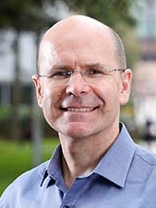University of Sydney vice-chancellor Mark Scott pockets $150,000 pay rise
The salary of the University of Sydney’s vice-chancellor has breached $1.33m a year, as foreign students and donors with deep pockets helped fill the coffers.

Foreign students outnumber locals studying business, engineering and architecture at Australia’s oldest university, which milked $1.6bn in revenue from international tuition fees last year.
And a $151,000 pay rise for University of Sydney vice-chancellor Mark Scott pushed his salary above $1.33m last year.
Nearly half of all students attending the sandstone institution hail from overseas – mainly China – and dominate enrolments in degrees that once were the domain of domestic students.
In its latest annual report, the university reveals that foreign students make up 62 per cent of postgraduate and 38 per cent of undergraduate enrolments.
In the faculty of engineering – which imposes some of the highest academic entry requirements for Australian school leavers – as many as 59 per cent of students came from overseas.
Foreign students make up 71 per cent of enrolments in the University of Sydney Business School, and 53 per cent of enrolments in the school of architecture, design and planning.

The elite university posted a $545m surplus in 2024 – an increase of $193m compared to the previous year – thanks to investment income, international student fees and donors with deep pockets.
Despite the Albanese government’s attempt to reduce numbers of foreign students living in Sydney and Melbourne, revenues from foreign enrolment fees at the university rose 9 per cent last year.
The university spent $1.9bn on staff salaries and used international tuition fees to help cover a $69m shortfall in operating income for teaching and research.
Donations soared nearly 50 per cent, with 3200 donors coughing up $233m in philanthropic income last year.
“Declining commonwealth financial support in real terms has … increased the university’s reliance on fee-paying students,’’ the university states in its 2024 annual report, tabled in the NSW parliament on Friday.
Professor Scott – a former schoolteacher, editor, top bureaucrat and ABC managing director – pocketed an 11 per cent pay rise, equivalent to one and a half times the average wage.
His remuneration in 2024 was in the range of $1.335m and $1.35m, compared to the 2023 range of $1.17m and $1.18m – meaning his remuneration has rocketed by at least $151,000, and as much as $180,000.
Eight senior executives were paid more than $500,000 a year and eight earned more than $750,000.

University of NSW vice-chancellor Attila Brungs had his pay frozen at $1.15m, despite delivering a $204m surplus following two years of deficits.
Revenues from international students – who now make up 47 per cent of enrolments at UNSW – soared 61 per cent to $1.4bn last year.
In the annual report, Professor Brungs and chancellor David Gonski stated that the “federal government’s caps on international student enrolments posed a significant challenge to us and to the higher education sector”.
At Macquarie University, vice-chancellor Bruce Dowton was paid between $1.05m and $1.06m, having delivered the third year of deficits, which he whittled back to $3.7m in 2024.
One in four students came from overseas, pumping $282m into Macquarie University’s coffers at a time of “soft domestic enrolments’’.
“Between 2013 and 2023, enrolments in humanities disciplines like history and literature decreased by 35 per cent,’’ the university states in its annual report.
“Factors include higher costs and competition from vocational programs.
“Visa restrictions and policy changes are slowing international student growth, a major income source for universities.’’
At the University of Western Sydney, vice-chancellor George Williams – an eminent constitutional lawyer – was paid $800,000 last year.
The university recorded a $42m deficit, the third consecutive annual loss.
Nearly a quarter of its students came from overseas, delivering $244.6m in revenue.
Three other universities paid their vice-chancellors more than $1m last year. Despite large-scale job-shedding, the University of Wollongong paid between $1.05m and $1.065m to its former vice-chancellors.
Patricia Davidson quit in April last year and John Dewar filled in until Professor Max Lu took over the top job this week.
University of Newcastle vice-chancellor Alex Zelinsky was paid between $1.02m and $1.03m last year.
The University of Technology Sydney (UTS) suffered a $78m deficit – the biggest loss among the 10 universities that are based in NSW.
The vice-chancellor of UTS, Andrew Parfitt, was paid between $900,000 and $1m.
Writing in the UTS annual report, Professor Parfitt and chancellor Catherine Livingstone warned cuts to the number of international students “would reduce capacity to return to surplus without significant reductions in expenditure in coming years’’.
Southern Cross University vice-chancellor Tyrone Carlin was paid between $975,000 and $989,000.
Charles Sturt University vice-chancellor Professor Renee Leon was paid $893,547. The lowest paid vice-chancellor was Chris Moran of the University of New England, who earned between $670,000 and $680,000.






To join the conversation, please log in. Don't have an account? Register
Join the conversation, you are commenting as Logout